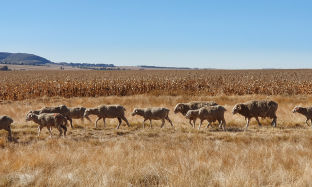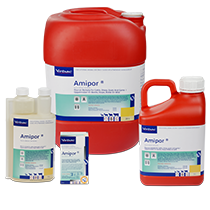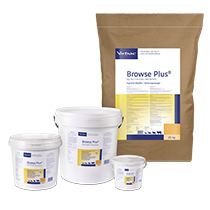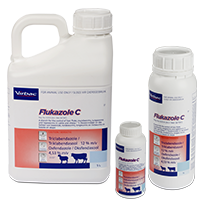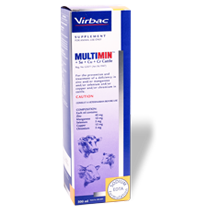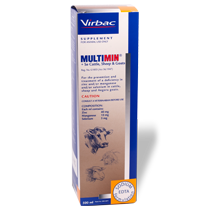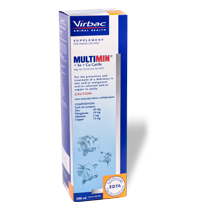
Drought Bulletin
The drought has a strangle hold on large parts of the country. Where it has indeed rained recently, it is probably too late to alleviate the detrimental effect of the drought before the start of winter. These difficult conditions not only have a negative effect on plants and animals, but they can also easily lead to despondency and even desperation among farmers. It is important that we should all realise that this is not the first drought we are experiencing, neither will it be the last one! By being proactive, the effect of the drought can be reduced. This memo is aimed at providing some general hints to livestock producers to minimise the effect of the drought conditions.
The following key aspects will be discussed:
Reducing livestock numbers
Early weaning of calves/lambs
Optimal use of available roughage
Controlling internal and external parasites
Supplementing trace minerals and vitamins
Vaccinating animals
Reducing livestock numbers
Regardless of how difficult this is, reducing livestock numbers should be one of the first steps to be taken. Get rid of all the “passengers” or less productive animals on the farm, before their condition deteriorates to such an extent that they cannot be sold, or prices fall too much. Animals should be reduced in the following order:
- Male animals (bulls/oxen/weathers) that cannot assist in building the herd after the drought
- Adult female animals – that are not already pregnant, do not calve/lamb regularly, have poor maternal qualities and those that are already near “retirement age”
- Replacement heifers/ewes – first sell the weaned to year-old, nonpregnant heifers and then the one to two-year-old heifers, if necessary
- The last option is to sell lactating and/or pregnant cows/ewes
- Reducing the stock numbers reduces the number of mouths for which provision should be made and expensive fodder should be bought so that better care can be taken of the remaining animals. This will reduce loss of condition, which in turn can limit loss of production and condition, and deaths.
Early weaning of calves/lambs
It is better to wean calves/lambs early and raise them separately, than to allow cows/ewes to be suckled to the extent that they are only skin and bone. Female animals that have lost too much condition (condition score of 2.5 and less), will reproduce much more poorly, and take longer to become pregnant again when conditions improve. Furthermore, it is cheaper and more effective to take care separately of dry cows/ewes and calves/lambs than to take care of lactating cows/ewes. Nonlactating cows/ewes can be maintained on much cheaper rations, while the young calves/lambs will make use of expensive supplements more effectively.
A rule of thumb rule for early weaning of lambs is to do this at the age of approximately 60 days and calves at the age of six months, provided they receive creep feed. If conditions demand even earlier weaning, very specific attention will have to be paid to the young animals to ensure their survival and development.
If lambs/calves are weaned early, it is important that they should be dewormed and vaccinated in good time and receive trace mineral and vitamin supplements and preferably be made accustomed to (creep feed) to the rations they will received after weaning. This will reduce the weaning shock and improve the survival and development of the animals weaned early.
Optimal use of roughage
In times of drought, the limiting factor is the amount of roughage available to maintain the animals. Therefore, all the available roughage should be stored and used as effectively as possible to limit the purchase of scarce and expensive fodder as far as possible.
Cereal crops affected so severely by the drought that it is not worthwhile to harvest them may be used as roughage for the livestock branch of the farm to derive at least some value from them. Maize, soybeans, sorghum and sunflowers may be ensilaged if the percentage of dry matter (DM) in them is still between 28-35% is. The addition of inoculants and additional energy can improve the quality of the silage. However, the nutritional value of this “drought silage” will be less than that of normal silage (especially when there is insufficient grain formation), but with the correct supplements, they can be used effectively as:
- maintenance rations for breeding animals, or
- as a base for a ration for feeding-pen finishing of weaned calves/lambs and animals that have already lost so much condition that they are not marketable.
Contact your nearest nutritionist about compiling licks and/or supplements to be used with this silage, in accordance with its nutritional value. The class of animal (production state), for which it will be used will determine what the supplement should be.
If the cereal crops cannot be ensilaged, they may also be used as “standing hay” with lick/supplements. However, the wastage will just be higher (even 30% and higher!) – something that can indeed not be afforded.
Grazing (natural or cultivated): grazing that is still available should be utilised as effectively as possible. The drier and scarcer the grazing becomes, the lower its digestibility and quality, but it can nevertheless be used as a source of roughage. Lick supplements that also supply NPN play a major role in the utilisation of this grazing. Its usefulness can be improved further by using a digestive modifier. This contributes towards a healthier rumen function, which in turn leads to better digestion, absorption and utilisation of the nutrients locked up in dry grazing. As a result of better digestion, the flow-through rate, and hence absorption, are enhanced, resulting in larger amounts of nutrients. NB. Start earlier rather than later with supplementation to prevent the animals’ condition from declining too much!
Bush component: in areas with a bush component, its utilisation can be improved by including the same digestive modifier as above. The tannin prevalent in various types of tree, restricts their usefulness. Tannin combines with the proteins so that they cannot be absorbed effectively by the animals. When the tannin is neutralised successfully, the foliage can become an important source of food for the animals, which results in more useful nutrients.
In some cases, invasive species can serve as a source of roughage in maintenance rations. When they are cut down, shredded, processed finely enough and enriched with supplementation of a digestive modifier, protein and energy sources, they can be used as maintenance ration.
Controlling parasites
Internal:
In times of drought, most farmers don’t think that parasites that are present can be a factor at all, let alone that they can affect animals negatively. Although the parasite load may generally be lower, rain (such as has occurred recently over large parts), may trigger a parasite boom that could catch you unawares! Under conditions of stress and reduced immunity, even relatively low parasite loads can affect the animal negatively. When conditions are unfavourable for parasites to complete their life cycle, they remain dormant in the animals. Loss of blood and blood proteins imposes much stress on the animals. Hence it is important for animals to be treated so that this will not have an additional depressing effect on the condition of the animals. Therefore, you should ensure that sheep and cattle are treated with a good quality broad spectrum agent to kill as many internal parasites as possible.
In liver fluke areas the overall numbers of their infectious stage of the liver fluke (miracidium) may perhaps be lower, but with the lower water levels of streams, mashes and dams, the infectious stage of the liver fluke is more concentrated! The immature stage of the liver fluke causes the most damage to the liver. The liver is perhaps one of the most important organs of the animal and it is involved in various vital processes. Therefore, a liver that is not functioning optimally owing to liver fluke damage imposes even more stress on the animal. Therefore, you should use a product that works best against the immature, as well as the mature, stages of the liver fluke.
External:
During the winter months, and especially when animals are in poor condition and stress levels are high, lice can cause huge damage. Lice cause severe irritation, which causes animals to lose condition even further. At the first signs of lice infestation, animals must be treated immediately and effectively. In some cases, and with some methods of treatment even two treatments may be necessary to achieve effective control.
The numbers of ticks and insects may also increase dramatically with the slightest amount of rain. Hence outbreaks of diseases such as Texas cattle fever (red-water fever), gall sickness, heart water, sweating sickness and even blue tongue, horse sickness and lumpy skin disease may appear unexpectedly. Be ready to fight external parasites. Bear in mind that the tick-transmitted diseases are transmitted by the larva and nymph stages of ticks, which cannot be seen easily with the naked eye. Therefore, do not wait until mature ticks appear before treating. If the immunity of animals is strained (as in drought conditions), they fall ill more easily – even when they have been exposed to diseases before.
Supplementing trace minerals and vitamins
Trace minerals are minerals which are needed in minute quantities, but which play a very important role in a multitude of functions in the body, from reproduction, growth (ADG), production (meat/wool/hair/milk) to immunity. The stress levels of animals that become stressed by suboptimal nutrients are increased and their immunity is suppressed by this. Low levels of nutrients and stress associated with unfavourable environmental conditions have a depressing effect on the response that can be expected after administration of vaccines.
Licks and supplements contain trace minerals and should be a part of the supplement programme. Unfortunately, their absorption is affected negatively by antagonists in the digestive track (especially Ca, Fe, S), as well as varying intake owing to limited space at the feeding trough, dominance in the herd, etc. The best way to ensure that trace mineral supplementing takes place correctly and effectively, is by administering a proven, correctly balanced and highly bio-available injectable product.
In times of drought, vitamin A supplement, together with the trace mineral supplement, can also help to improve the integrity of the mucous membranes. This may reduce the incidence of e.g. eye problems and the penetration of other disease-causing organisms. When animals become frail, they may also benefit from the oral supplement of a combination of vitamins and amino acids to support their general health and overall vitality.
Vaccinations
The chances of animals’ contracting clostridium-related diseases such as black quarter and botulism (gallamsiekte) are much greater than normal when they graze on short grass under very dusty conditions or are fed in feeding pen situations. Therefore, you should see to it that the black quarter and botulism vaccinations are up to date! When one or two deaths are prevented by vaccination, the costs of the vaccines are usually recovered. It is too late and ineffective to start vaccinating when deaths are already starting to occur!
The reduced immunity, dusty conditions and the bunching-up of livestock at the feeding troughs can promote the incidence of respiration-related diseases such as pneumonia, pasteurella, IBR and BVD. Therefore, you should see to it that the core herd and animals that are being fed are protected by timely vaccinations.

